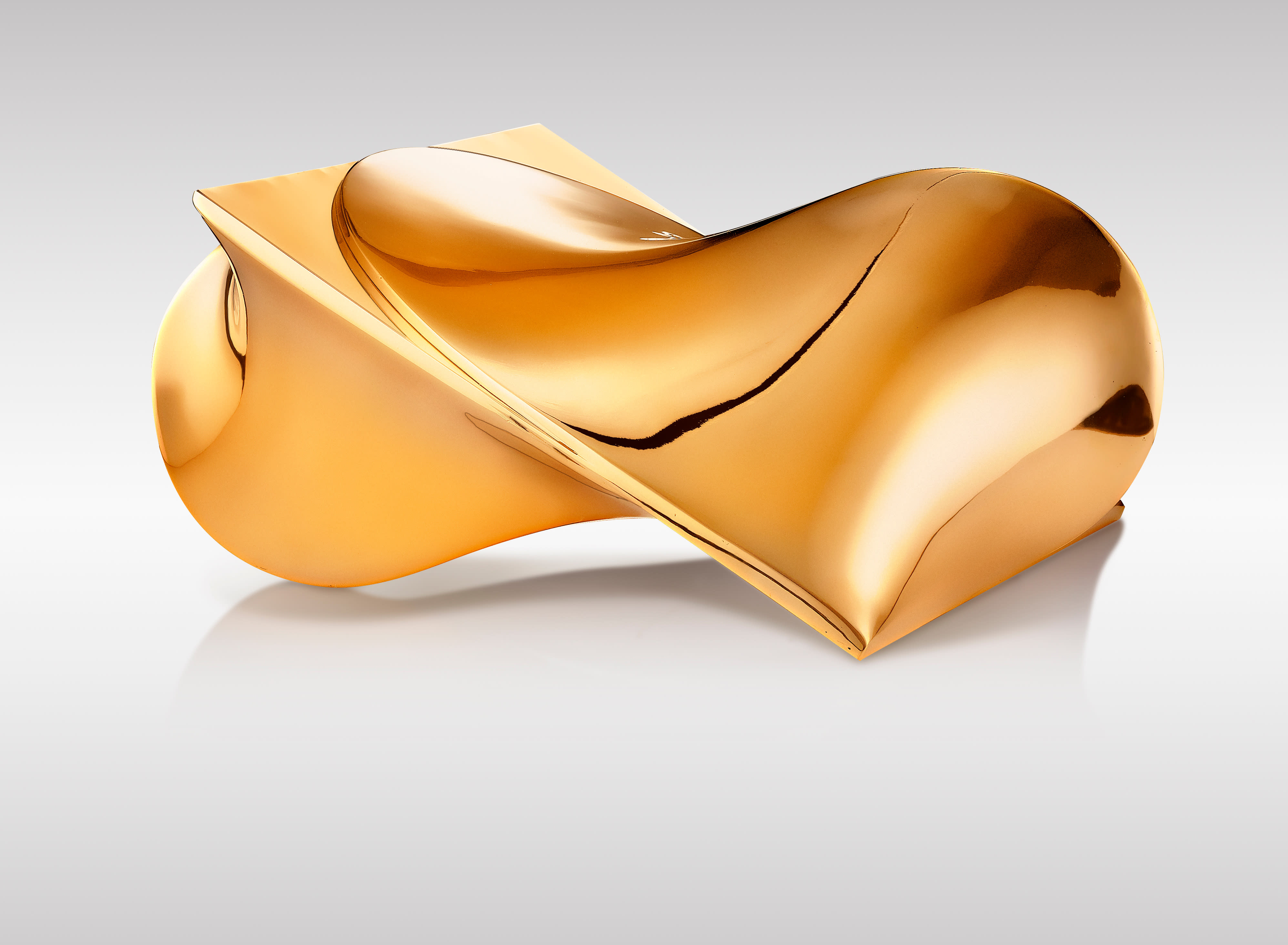Agostino Bonalumi
b. 1935, Vimercate, Italy
d. 2013, Desio, Italy
Bronzo (Bronze)
1969-2007
Bronze
22 x 53 x 39 cm (8 5/8 x 20 7/8 x 15 3/8 in.)
Edition 2/7
Provenance
Literature
F. Bonalumi, M. Meneguzzo, Agostino Bonalumi. Catalogo Ragionato, Milan, 2015, vol. I, p. 194; vol. II, no. 461, p. 438, illustrated.
A. Soldaini, V. Locatelli, Agostino Bonalumi Small Gems, exhibition catalogue, Milan, 2021, p. 383.
Description
Born in 1935, Agostino Bonalumi was a painter, draughtsman and sculptor. In 1958, the artist had his first exhibition alongside Piero Manzoni and Enrico Castellani at Galleria Pater, Milan. His works consisted of pre-pop compositions made of objects such as shirts, underwear, and metal tubes, which had been glued onto canvases. Bonalumi went on to take part in further exhibitions during the year that followed. 1958-1960 was a particularly important period for the artist, as it was then that he began to produce his first monochrome works with padded elements. These would later come to be known as ‘shaped canvases’—the quintessential works of his oeuvre. In this period, Bonalimo held shows in Rome, Milan and Lausanne. Additionally, he founded the magazine Azimuth and participated in exhibitions at the Azimut gallery.
Inspired by his mentor, Lucio Fontana, Bonalumi began to expand his work beyond the canvas, developing the idea of what he would call the ‘pittura–oggetto’ (painting-object). In 1959, he held his first solo show outside of Italy in Rotterdam. In 1960, his solo exhibition, Agostino Bonalumi. Recent Paintings, Sculptures and Drawings, opened at the New Vision Centre Gallery in London. It was during this period that the artist became one of the founders of the international Nouvelle École Européenne (NEE) movement in Lausanne.
Bonalumi also had close links with the international Zero movement (both in the Netherlands and Germany), documented by major exhibitions such as ‘Zero’ in London, 1964. It was during this exhibition that his talent became outstandingly clear in comparison to the other artists working with the same technique; his bi-/three-dimensional explorations in forms, shapes and shadows were superiorly natural and fluid.
As Bonalumi experimented with these three-dimensional canvases, he went through several distinct phases. In the first, he produced monochrome paintings with padded elements that formed extruded shapes; Bonalumi called these estroflessioni (extroflections). In 1965, he began to create asymmetrical elements which would break the boundaries between the canvas and the object stretching it. In a third phase, he stretched the canvases over wooden elements which formed three-dimensional bodies that literally broke the surface. He continued to venture into new dimensions with an emphasis on sinuous shapes in a fourth stage of his practice. Bonalumi then introduced ciré and nylon fabrics, as elements that substituted canvas, but the main aim of his explorations—going beyond forms and looking at objects transforming the space—remained the same.
Bonalumi’s bronzes are the models from the 1960s that are once again brought to life: They are the same, yet different: the bronze cast recreates the same physical form, yet the medium’s luster makes the work interact with and rely upon its surrounding as light reflects from its surface. ‘You see, bronze has to become live material. It has to induce a warm sensation, as organic material. It has to induce a warm sensation, as organic matter, and it has to have and emit the light of the August sun’. Agostino Bonalumi
Bronzo (Bronze) (1969-2007) is exemplary of the undulating forms seen throughout Bonalumi’s oeuvre. Often described as ‘metaforms’, they demonstrate a dimensional totality. Each form he creates is a spatial thought of deliberately ambiguous, unsettling, elusive rationality. The work is imbued with a sense of tension as soft curves converge to hard ridges, creating spine-like lines and flat planes from which the forms seemingly emerge. It interacts with and depends upon its surroundings, reflecting light and casting shadows, acting not just as an object within space, but merging and integrating as a part of it. The result is an elegant yet enigmatic embodiment of the art-life duality—a work that truly transforms and goes beyond the space.




